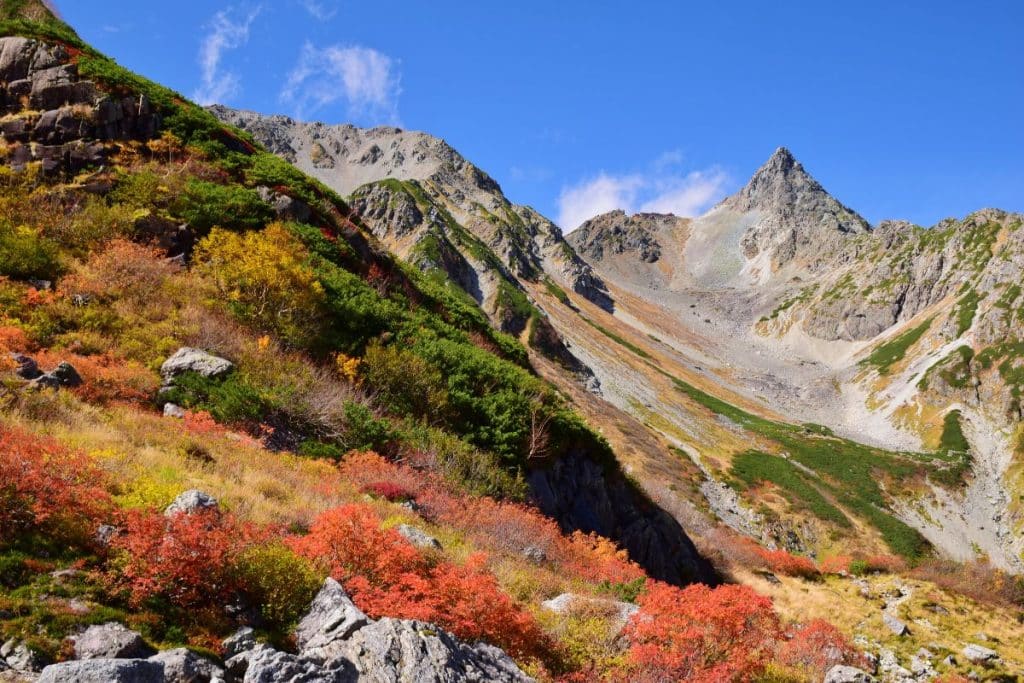One of the most breathtaking and treacherous hiking routes in the world is the Daikiretto Traverse. The trail is located in the Japanese Alps, sometimes referred to as “The Roof of Japan.” In central Japan, this 180-mile-long mountain range runs from north to south.
This dangerous ridge lies between the impressive peaks of Yarigatake and Okuhotaka-dake. The Daikiretto Traverse is usually crossed as part of the multi-day Kamikochi, Yarigatake and Mt. Hotaka circuit and covers about 2 miles. Despite the relatively short distance, the route is incredibly challenging and features deadly, dangerous drops that can exhaust even the most experienced hikers.
You should not undertake the Daikiretto Traverse if you are an inexperienced hiker. As an amateur, you could very easily end up dead doing this. This steep, rocky section, which is part of the Hotaka circuit, has impressive topography. Alongside the narrow path are breathtaking cliffs with views of waterfalls around 300 meters deep. During this demanding trail, hikers encounter sections that necessitate climbing.
Most of the climbing sections are secured with safety chains. Others, however, lead across open spaces.
The hikers also have to climb over ladders placed along the path. These ladders are securely attached to the landscape, so don’t worry. This hike might be suitable for you if you are an experienced hiker who can endure some heart-pounding heights. The fear may turn your stomach, but the views of the vast Japanese mountain ranges are incomparable.
The decision to hike the Daikiretto Traverse cannot be made in haste. This hike requires careful consideration if it is to be successful. To achieve the traverse, you need to organize your trip to the Northern Japanese Alps, taking into account the time of year, the equipment you need, and your accommodation. The period from late May to September is the official climbing season in the Northern Japanese Alps. As the weather is ideal for trekking, this is also the busiest time. For this reason, most of the huts offering accommodation and food are open during these months, while some of the larger huts stay open a little longer.
If you are a skilled hiker who is not afraid of rough situations, you can think about making the crossing in winter. It is quite risky, so do not take this decision carelessly. Hikers who are traveling at the beginning or end of the climbing season should pack warm clothing, as the temperatures are cold.
Bring a protective helmet to protect you from flying pebbles and a pair of grippy gloves to give you a secure grip, no matter what time of year you’re traveling. You should also pack Japanese yen for your accommodation and food. Finally, and perhaps most importantly, you should pack a printed map, as you won’t have cell phone reception along the way.


